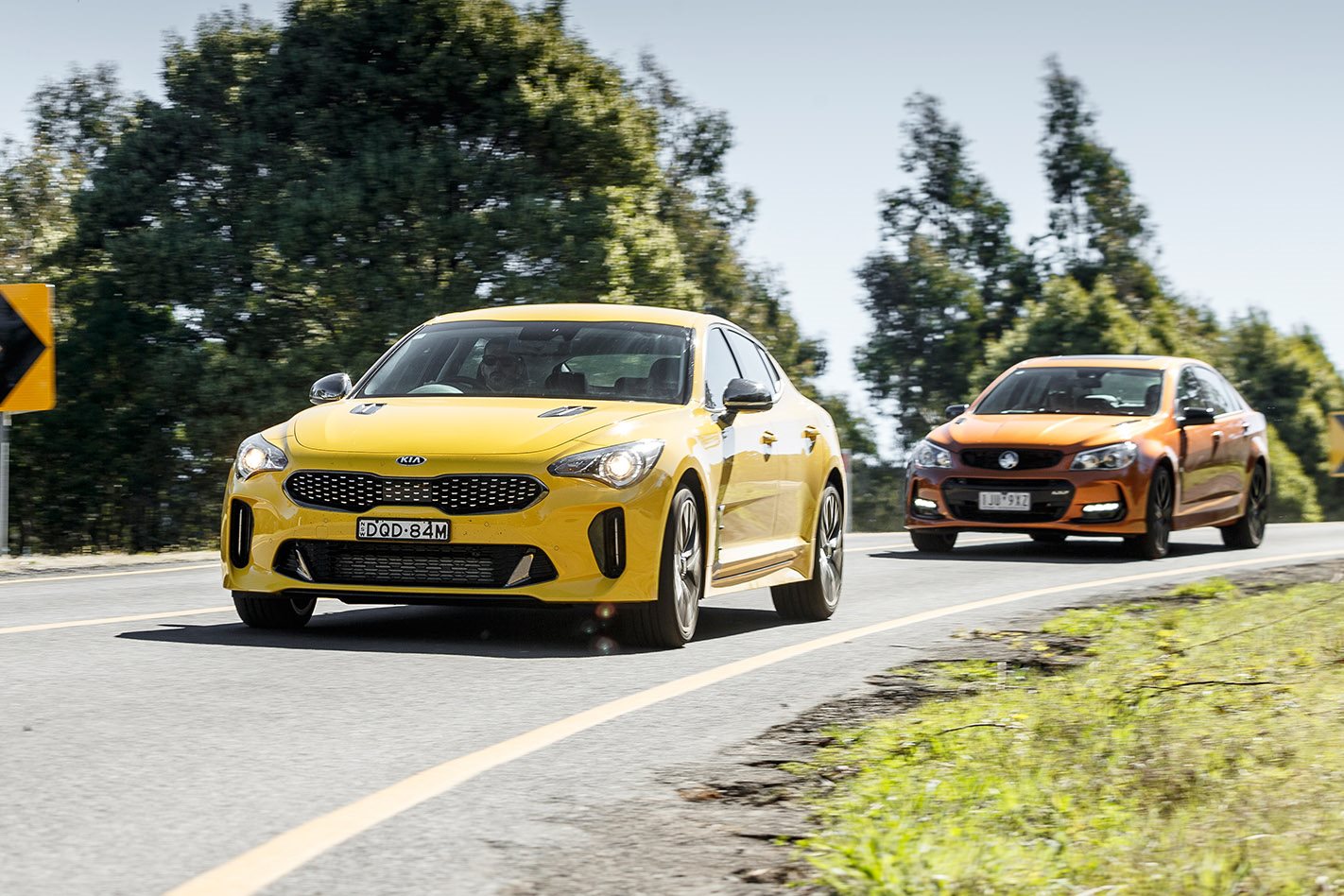THE passing of the locally made Ford Falcon and Holden Commodore means there are no immediately obvious replacements for Australia’s home-grown, rear-drive V8 muscle cars, and it requires a little lateral thinking when it comes to what cars can potentially fill the void.
Kia’s Stinger looks like a worthy adversary. It may have two fewer cylinders than the outgoing Commodore SS V, but in almost all other key areas it looks tantalisingly like it is ready to step up to the plate. Similar to the Commodore, it has rear drive, four-doors and a big boot, and the Stinger competes on both price and power. But, does it stack up on tarmac as well as it does on paper?

PERFORMANCE
The Commodore’s 6.2 litres of pure, naturally aspirated V8 grunt was always going to be a hard act to follow. Given the ever-tightening noose of emissions regulations, any successor was destined to compete using a downsized engine and forced induction – exactly what the Kia does.
The Stinger falls a little short of the 304kW/570Nm Aussie’s output, but with 272kW and 510Nm the Stinger is properly quick. Unlike the rev-hungry Commodore, the Stinger’s peak torque arrives low down in the rev range via its brace of blowers, boosting early and pushing power on strongly to the redline. The official 0-100km/h time for the Stinger is 5.1secs, about 0.1secs slower than the Holden’s atmo LS3.
The difference, however, is in how the Commodore and the Stinger deliver their performance. Stomp the Commodore’s accelerator pedal to the floor, and both power and torque appear to build in parallel toward redline, with long gear ratios making the delivery feel like it will never end.
Both cars tip the scales at 1780kg but the Kia’s off the mark acceleration makes it feel as though it is carrying less middle-aged spread and its cosier cabin and more coupe feel conjure the impression you are piloting something smaller and lighter.
But where the SS V decisively blows the Kia out of the water is with the aural theatre of the LS3. Even when the Stinger GT arrives with an optional bimodal sports exhaust, we doubt it will come close to the bark of the V8.
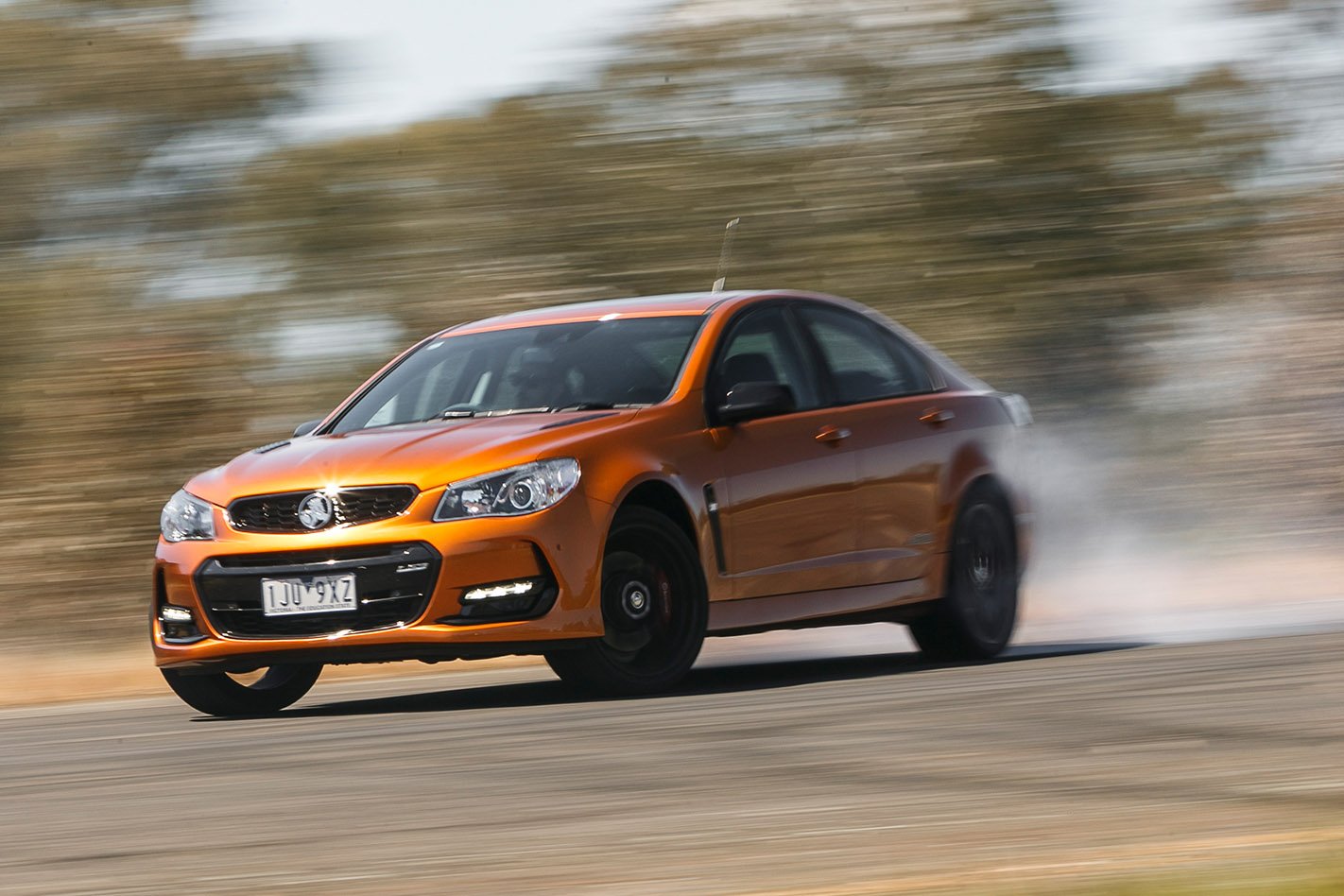
RIDE AND REFINEMENT
Surprisingly, the Stinger uses a somewhat soft steel-sprung suspension setting (at least in 330S and 330Si; the GT uses adaptive dampers for variable settings). It’s a surprisingly comfortable long-distance cruising set-up, but aim it at a more exciting road and it shows a surprising amount of sports car handling.
Road noise is respectable with little translated through the 19-inch tyres and even less from turbulence. While the Stinger lacks the soundtrack it needs to launch a convincing assault on the Aussie, the lack of aural theatre does translate to a more relaxing cabin ambience when simply getting somewhere.
The SS V rides on a stiffer FE2 chassis tune and larger 20-inch wheels. The suspension’s local development is patently clear when negotiating Australia’s unique roads, with the Commodore returning comfort and a serene cabin when it has to, but staying flat and controlled when the way ahead turns twisty. Despite a roomy cabin and plenty of space for five adult occupants, the interior is not noisy and the excellent exhaust tune does not boom at low rpm and only makes itself known when the driver invites it.
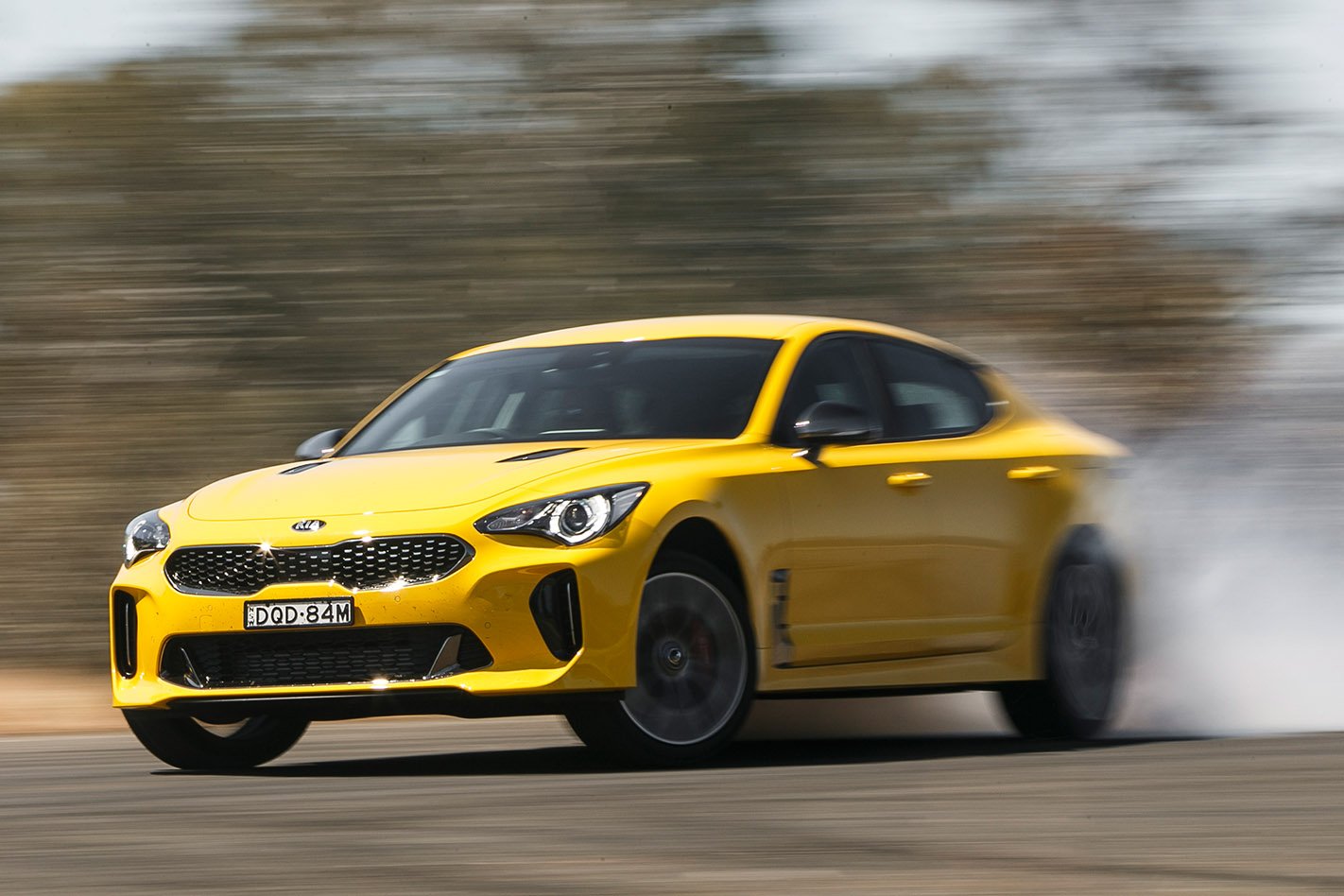
STEERING AND HANDLING
The Stinger’s steering is initially light in the hands when handling conventional day-to-day driving and its long bonnet is easily pointed, but when the going gets quicker it fails to weight up sufficiently for a truly confidence inspiring front end.
It’s the opposite problem with the Holden, which has a light and vague feel about the central position and while its set-up gains significantly more weight in corners, it feels synthetic rather than genuinely communicative. Both offer impressive grip through bends but the Kia’s softer tune allows it to list and squat with the onset of power, the Holden remains staunch and level. Both are efficient at demolishing winding mountain roads and both feel as though you would need to spend time learning their individual nuances before they will return the confidence to attack a favourite stretch of blacktop near the limit.
Sitting lower in the Kia imparts a more involving feel and increases the sense of speed compared with the Holden, which insulates some of the sensation of pace with its large proportions and higher driving position. On the limit, both cars will gladly wag their tails free in typical high-powered sportscar slides but where the Kia locks into an almost gyroscopically stable angle, the Holden squirms about its axis looking to either snap straight or complete the circle in a spin.
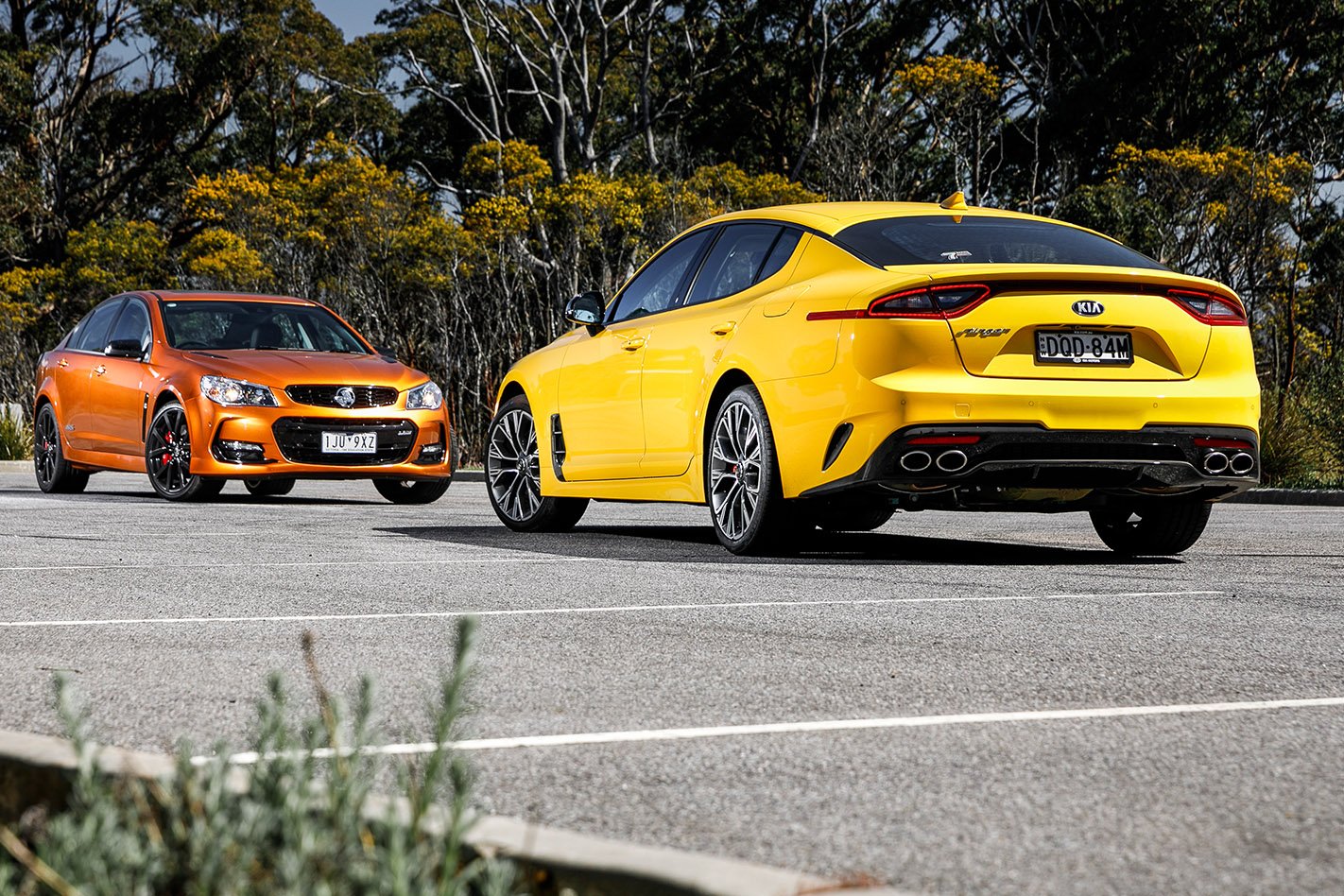
INTERIOR AND VERSATILITY
Here, the Holden and Kia are very evenly matched. Both offer a generous second row for adults but the Holden wins with more head, knee and shoulder room, while rear passengers will prefer the less obscured view of surroundings. The Kia’s 406-litre boot is big but the liftback bootlid makes the space particularly easy to load, while the Holden weighs in with closer to 500 litres and a more conventional sedan lid.
Inside the Stinger, occupants will appreciate a simple but ergonomic interior, but plasticky parts in contact areas, fake carbonfibre and beige roof liner let it down. By comparison, the Commodore’s cabin is starting to show its age with similarly misleading carbon-look parts and quality that’s on par with the Kia.
When the VF rolled out in 2013, its cabin improvements over the outgoing VE were justifiably loaded with praise, but it’s remarkable how quickly things have started to date. On the flipside, the Kia’s cabin might not be best in class but it certainly is already ahead of the Holden’s and should stand the test of time. As for quality, fit and finish, the early signs are good but only time will tell.
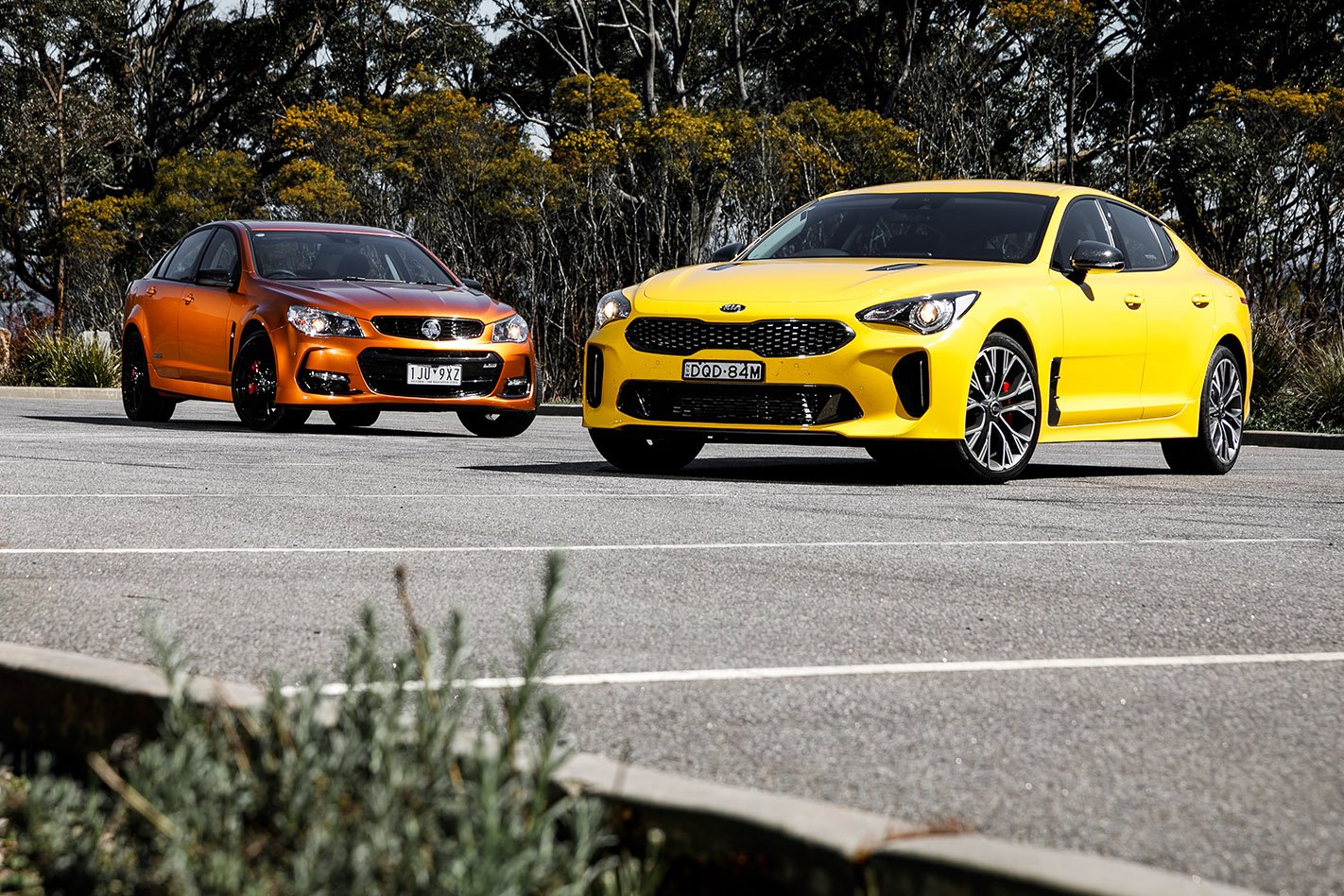
PRICE AND EQUIPMENT
If you’re quick enough to grab one of the last VF Commodore SS V Redlines that have now all rolled off the production lines, you’ll be asked $56,190 when fitted with an automatic transmission, which aligns closely with the $55,990 price tag applied to the auto-only Kia Stinger 330 Si.
While Holden’s touchscreen system is starting to show its age the Kia’s 8.0-inch screen has a fresher look. Both offer hide-upholstered seats and equipment levels expected from mid-$50k cars including smartphone connectivity, Bluetooth and USB connection, while the Kia pips the Commo for driver assistance kit including active cruise control and AEB. Like all Kia’s, the Stinger deal is also sweetened by the company’s seven year warranty deal.
Some will bemoan the Commodore’s asking price for a nearly four-year old design and argue the Stinger is better value by default, but the Kia is a relative unknown quantity as an all-new model for both the market and within Kia’s ranks. But it goes up against the tried, tested, honed and loved local, which many will see as the less risky path to driver-focused high-powered sedans.
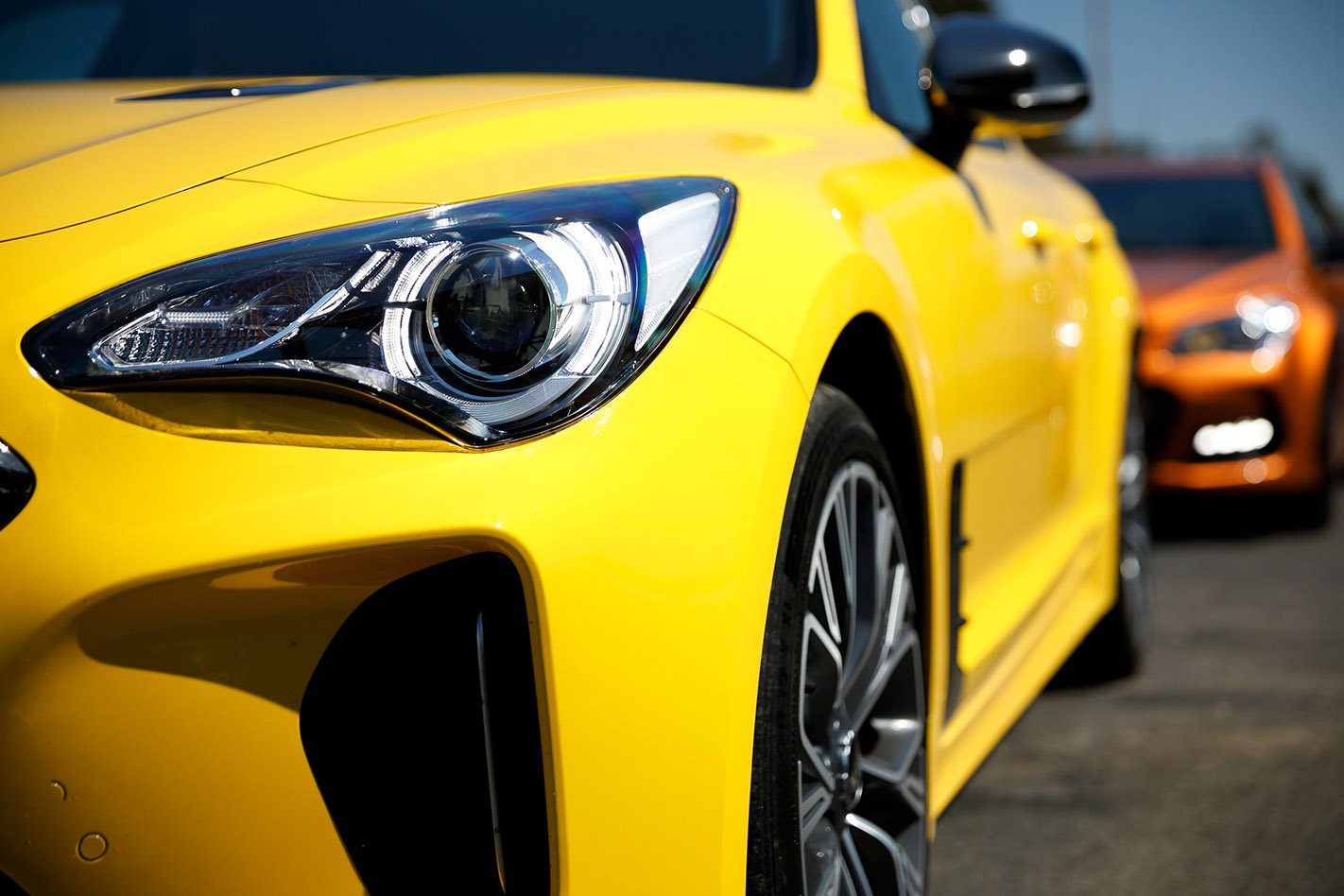
VERDICT
Let’s be honest, the only thing that can adequately replace a rear-drive, naturally aspirated V8 large sedan born on red dirt is another V8, rear-drive Aussie muscle car, but since we are all going to have to get used to a future without Ford and Holden V8s the Kia is undoubtedly worthy of a look, particularly in the absence of a more fitting alternative.
It can’t compete for engine character or soundtrack and its ride, while surprisingly capable on Australian roads doesn’t have quite the home ground advantage of the Holden. But, if you can leave your patriotic preconceptions and badge snobbery at the door, the Kia is an enormously capable car. It goes like a cut cat, looks like nothing else on the road and draws the admiring glances to prove it, devours all types of tarmac with ferocity and will leave you wanting for nothing when it comes to practicality.
Ironically, the South Korean may just be the car to take the sting out of losing an iconic Holden.


